An effective vendor management process helps marketplace owners to ensure quality, reliability, cost-effectiveness, and customer satisfaction across their platforms.
As an online marketplace owner, you have to –
- Communicate with multiple vendors
- Ensure product quality
- Manage logistics
These tasks are complex but rewarding.
All you need to know is how to manage vendors in your marketplace accordingly.
In this blog post, you’ll learn everything from selecting the right vendors and establishing clear communication channels to monitoring performance and resolving conflicts.
Let’s start-
Why is Vendor Management Important?
Vendor management is the process of overseeing and coordinating relationships with suppliers and service providers.
Effective vendor management helps businesses maintain quality, control costs, and build strong partnerships.
There are quite a few reasons why vendor management is important such as
- Ensures vendors deliver high-quality products and services
- Helps avoid unexpected expenses and ensures value for money
- Improves operational efficiency with clear communication channels
- Allows businesses to address problems before they escalate
- Reduces the risk of supply chain disruptions
- Builds strong, collaborative relationships with vendors of loyalty and reliability.
Here is an image of Forrester Consulting survey that demonstrates the reaction of customers in an eCommerce marketplace where the seller delivers poor services:
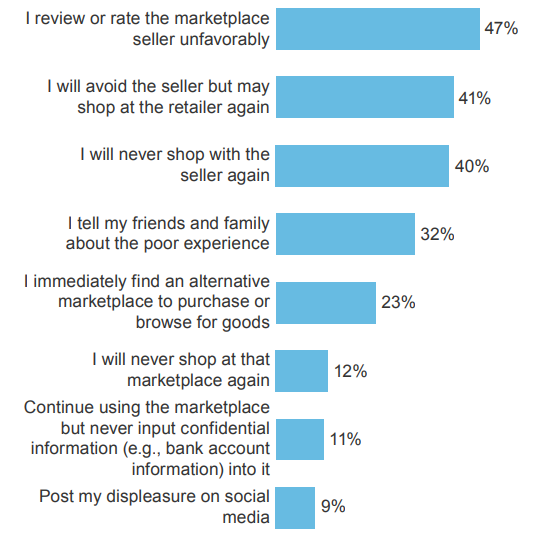
Managing vendors in an eCommerce marketplace involves several key activities to ensure smooth operations and successful partnerships. Here’s a breakdown of the essential tasks:
- Vendor Selection: Choose the right vendors by evaluating their product quality, pricing, reliability, and reputation.
- Contract Negotiation: Establish mutually beneficial agreements by negotiating terms, conditions, and pricing.
- Vendor Onboarding: Effective onboarding process by verifying credentials, and providing necessary documentation to new vendors.
- Performance Monitoring: Track vendor performance based on key metrics like product quality, delivery timelines, and customer satisfaction.
- Relationship Building: Build strong relationships with vendors through effective communication, regular updates, and addressing any concerns.
- Dispute Resolution: Manage and resolve conflicts between vendors and the business to ensure fair resolutions.
- Contract Renewals and Terminations: Evaluate vendor performance to decide whether to renew or terminate contracts.
- Risk Management: Identify potential risks in vendor relationships, such as supply chain disruptions, quality issues, or financial instability.
- Strategic Alignment: Make sure that vendor activities align with the overall business strategy and contribute to the organization’s success.
These activities are important for learning how to manage marketplace vendors.
How to Manage Vendors on Marketplace
Having first-hand experience in building and helping thousands of marketplaces, we know a few (secret) ways you can learn how to manage vendors in the marketplace.
Let’s share it with you-
- Select the Right Vendors & Ensure Identity Verification
- Manage Product Upload and Showcasing
- Manage Guidelines According to Sellers’ Location
- Make Sure Vendors Provide Stellar Сustomer Experience
- Monitor Every Transaction
- Keep an Eye Out for Security and Fraud
- Provide Essential Support and Resources
- Deal with Disputes
- Encourage Branding and Differentiation
- Provide Latest Technology
Now, let’s see them in detail-
1. Select the Right Vendors and Ensure Identity Verification
Registering the right vendors can lead your marketplace to success. The right sellers can build productive relationships.
When bringing in new sellers, prioritize those whose goals match yours and who are known for their quality and good reputation. Look into their products, reviews, and ratings.
Once you identify potential vendors, approach them and use promotional strategies to convince them to join.
Some marketplaces prefer to verify sellers’ real identities to prevent fraud and build trust. For example, Airbnb requires hosts to verify their identities to ensure customer safety.
Verifying real identities helps create a secure environment for your customers.
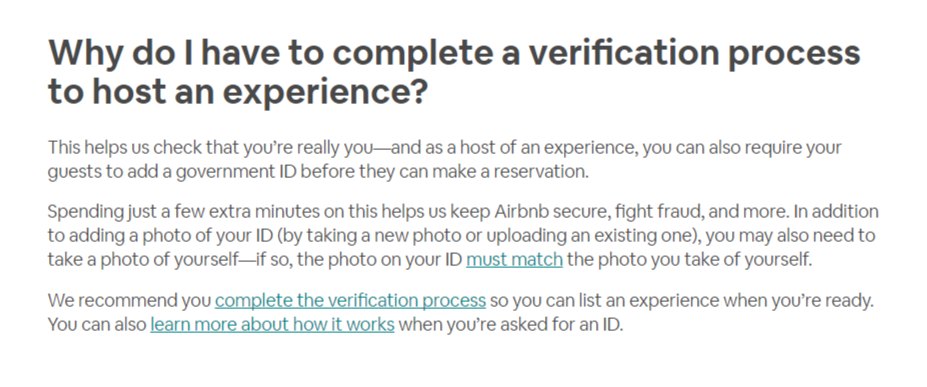
Similarly, Freelancer, a platform for freelance work, encourages suppliers to provide identity information.
2. Manage Product Upload and Showcasing
You need to manage how sellers create and list their products on your eCommerce marketplace. Set clear guidelines for vendors on aspects like picture quality, item descriptions, and other listing components.
This will make sure both vendors and marketplace administrators know what is expected and simplify the product uploading process.
Airbnb provides specific instructions for listing a space correctly, and Flipkart has a procedure for reporting inappropriate items.
Similarly, effective listing management is essential for any marketplace dealing with physical goods.
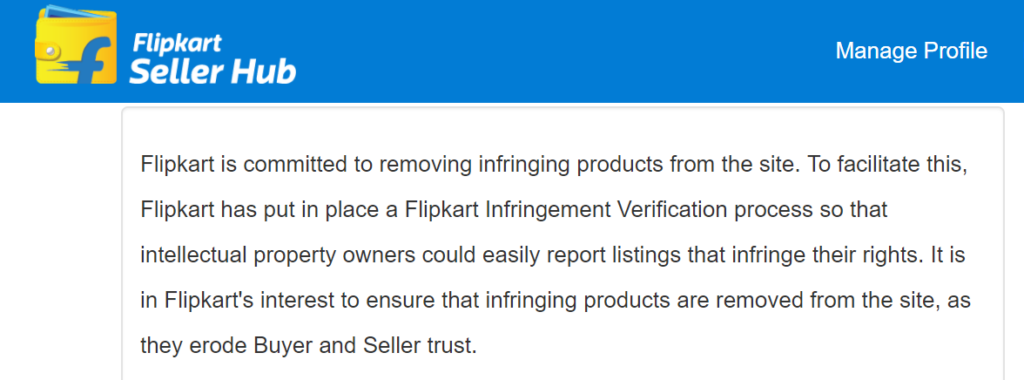
Modern eCommerce platforms offer features to simplify the uploading of thousands of new products.
Clear seller guidelines with powerful moderation tools help your marketplace maintain high standards.
3. Manage Guidelines According to Sellers’ Location
Amazon uses various “Amazon Contracting Parties” to work with vendors from different countries. This approach helps manage sellers who must comply with the legal requirements of their respective countries.
With separate contracting entities, Amazon ensures that vendors follow local laws and regulations while maintaining a streamlined and consistent experience across its global marketplace.
You can follow or take inspiration from the Amazon approach to create guidelines for your vendors according to their location.
4. Make Sure Vendors Provide Stellar Сustomer Experience
To maintain marketplace brand image you need to manage how sellers interact with customers and handle orders.
Here’s how you can ensure that sellers meet your standards:
- Quality of Goods: Regularly monitor and evaluate the quality of products of your sellers. Use product samples, quality certificates, and customer feedback to ensure that products meet your marketplace’s standards.
- Order Processing: Use multi-vendor platform tools to manage and oversee the entire order processing workflow from your admin dashboard.
- Order Delivery: If sellers are responsible for delivering goods independently, check the accuracy of delivery through documents and tracking systems.
- Customer Interaction: Monitor how sellers interact with customers, including response times and the quality of information provided.
- Performance Metrics: Establish clear performance metrics for sellers, such as response times and transaction quality. Amazon provides a detailed list of performance points for sellers to refer to.
Let’s move to the next point of how to manage vendors in your marketplace.
5. Monitor Every Transaction
Admins should have access to the seller dashboard to manage transactions and prevent fraud.
This helps real-time monitoring and tracking of all activities, making sure transactions are executed correctly. Separating orders between multiple vendors is also important.
Automation can handle numerous transactions, while manual processes should be available to resolve specific issues if needed.
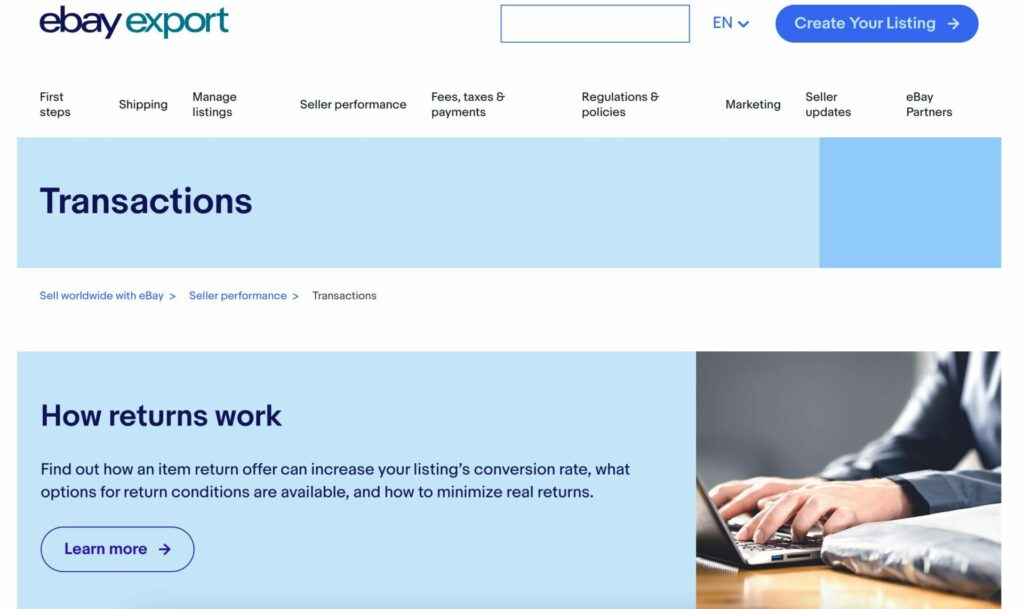
Marketplace platforms should offer full control over vendor transactions and orders. A payment method that supports both automatic and manual payouts will help manage financial flows between your marketplace and sellers. This will ensure timely and precise payments.
6. Keep an Eye Out for Security and Fraud
Etsy, known for its focus on handmade goods and strong anti-big business values, faced controversy when it was revealed that one of its sellers was not a craftsman but a wholesale manufacturer.
This incident highlights the importance that all sellers on a niche-focused marketplace adhere to the platform’s specific requirements to prevent similar issues.
To prevent financial fraud and maintain marketplace trust, several ways can be adopted. These include linking bank accounts and financial data to seller profiles, implementing multi-factor authentication for added security, and validating identities by reviewing profiles on social networks.
Jeff Jordan, former general manager at eBay North America, suggests focusing on unusual patterns such as high-dollar transactions. A sudden increase in new listings from a single seller, and recent changes in email or bank account details could indicate account takeovers.
7. Provide Essential Support and Resources
Provide your vendors with the essential resources they need to succeed on your platform. This includes offering educational materials, webinars, or workshops covering topics like product photography, marketing strategies, and customer engagement.
This helps vendors fully use all the marketplace features to their advantage.
By investing in your vendors’ success, you enable them to deliver exceptional products and services.
8. Deal with Disputes
Disputes are an inevitable part of any marketplace, but effective management of these conflicts can create a path for a successful platform.
To handle disputes effectively, establish a clear and well-defined dispute resolution process for addressing conflicts between vendors and customers. Make sure that this process is fair, objective, and quick to resolve issues fairly.
By managing disputes with transparency and impartiality, you can create a positive reputation for your platform and build trust among vendors and customers.
Want to Create an
Furniture Marketplace?
9. Encourage Branding and Differentiation
Customizing the storefronts can allow your vendors to build their brand identity within your marketplace.
This includes displaying their logos, creating unique product descriptions, and personalizing their storefronts.
Vendor branding will add depth and appeal to your marketplace. This will attract a broader customer base and improve the overall shopping experience.
10. Provide Latest Technology
Keep your multi-vendor marketplace up to date with the latest technological advancements and provide vendors with the best tools for selling products.
Stay ahead of the competition by continually improving your platform’s user interface, mobile-friendliness, and search functionality. Add automation wherever possible to ease the processes for vendors, making their tasks more efficient.
An updated, user-friendly platform not only supports vendors but also improves the overall experience for customers. They appreciate a marketplace that offers an enjoyable shopping journey.
Manage Your Vendors Efficiently and Create a Successful Marketplace
We are at the end of our article and hopefully, you now know how to manage vendors on the marketplace.
Before managing the customers, you need to be able to manage and control your vendors. Because they will interact with the customers a lot more than you and also they are the face of your marketplace.
If the vendors follow your guidelines and act accordingly, the reputation of your marketplace will reach sky-high.
Also by implementing the strategies we mentioned, you’ll be able to create a more cohesive, productive, and profitable marketplace.
The tips we have shared, follow them, and see the result. If you get the result you desire, do share it with us.

Subscribe to
Dokan blog
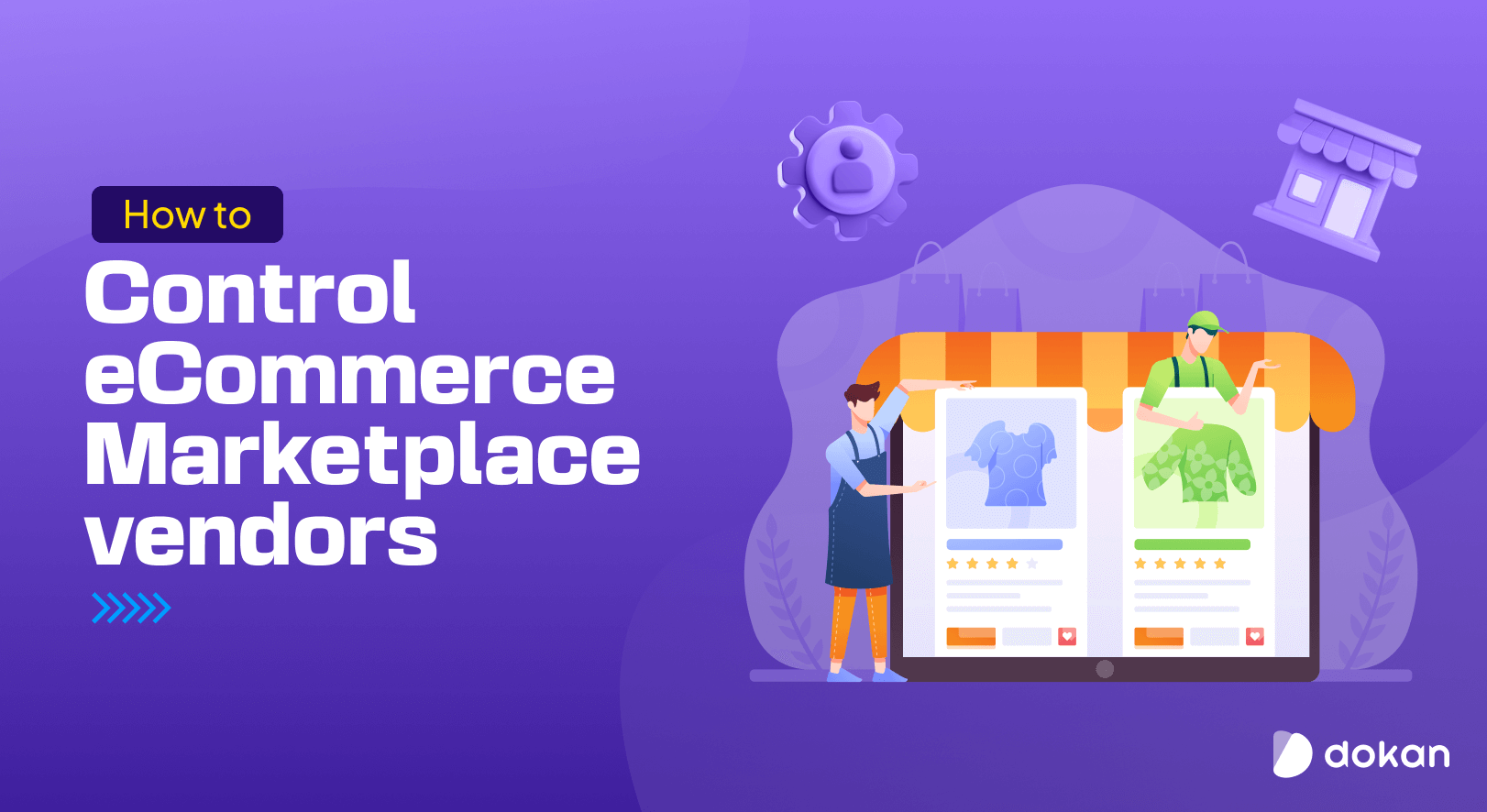





Leave a Reply